Types of flying fish are a fascinating group of marine species known for their remarkable ability to glide above the water’s surface.
Found in oceans around the world, these unique creatures have captivated humans for centuries with their incredible aerial abilities.
Contents
Understanding the various types of flying fish can provide valuable insights into their diverse characteristics and behaviors.
One such type is the wing flyingfish. With its distinct wing-like fins, this species has evolved to efficiently navigate through the air.
Allowing it to cover impressive distances and escape predators.
Exploring the different types of flying fish not only deepens our appreciation for these extraordinary creatures.
But also sheds light on the intricacies of marine ecosystems and nature’s ingenious adaptations.
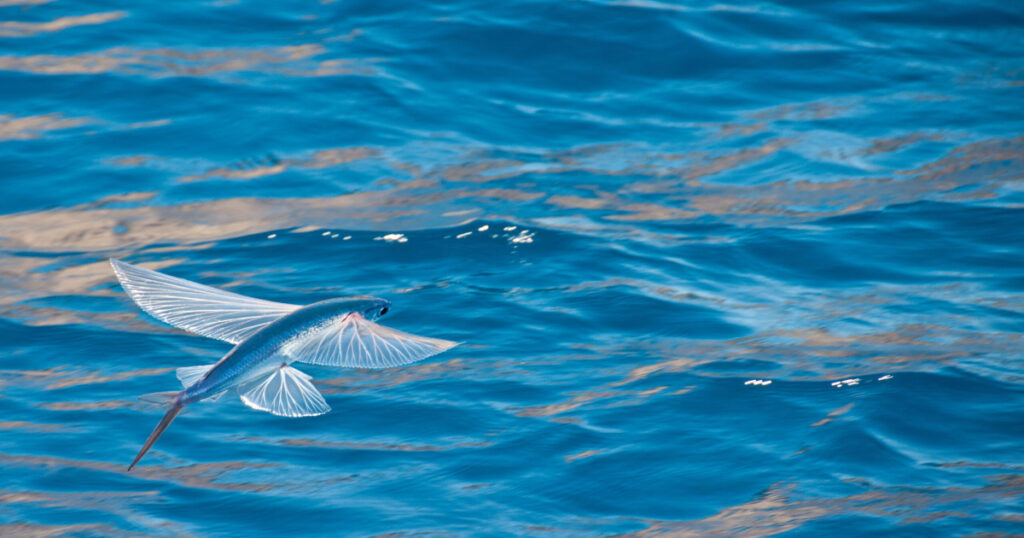
Understanding the Unique Adaptations of Flying Fish
Flying fish are truly remarkable creatures with some extraordinary adaptations that enable them to glide through the air.
Let’s take a closer look at these unique features and understand how they help these fish take flight.
Specialized Anatomical Features
Flying fish possess specialized anatomical features that set them apart from other fish species.
One of their most distinctive adaptations is their elongated pectoral fins, which act as wings when they launch themselves out of the water.
These fins are incredibly important for their ability to stay airborne for extended periods.
Gliding Through the Air
Thanks to their elongated pectoral fins, flying fish can effectively glide through the air, much like birds or airplanes.
When they gather enough speed underwater, they use a powerful thrust from their tail fin to propel themselves into the air.
Once airborne, they extend their pectoral fins and adjust them to catch the wind, allowing them to soar above the water’s surface.
Streamlined Body Shape and Large Eyes
The streamlined body shape of flying fish is another crucial adaptation that aids in efficient movement both in water and air.
Their sleek bodies minimize drag while swimming underwater, allowing them to swim swiftly and effortlessly.
Flying fish have large eyes that provide excellent vision, helping them navigate both above and below the water surface.
Rapid Direction Change Mid-Flight
One of the most impressive adaptations of flying fish is their ability to rapidly change direction mid-flight.
This maneuverability plays a vital role in evading predators such as birds or larger marine creatures.
By adjusting the angle of their pectoral fins and using slight movements of their tail fin, flying fish can execute sharp turns or sudden dives back into the water with incredible agility.
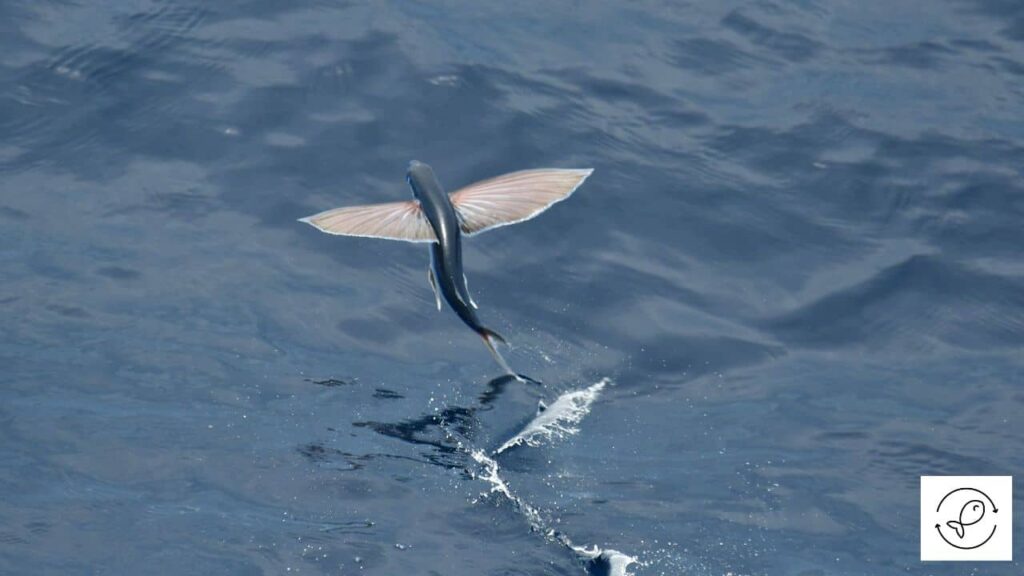
Exploring the Behavior and Habitat of Flying Fish
Flying fish, also known as marine fish, are fascinating creatures that inhabit warm tropical waters in the Atlantic, Indian, and Pacific Oceans.
These agile swimmers often gather in schools near the ocean’s surface during daylight hours.
When threatened by predators lurking beneath the waves, flying fish display an extraordinary ability to escape their clutches.
With a swift flick of their powerful tails, these remarkable creatures propel themselves out of the water and take to the air like birds. It’s truly a sight to behold!
One of the most impressive features of flying fish is their ability to glide above the waves for considerable distances.
Using their specialized pectoral fins, they can soar through the air at impressive speeds. Some species have been recorded gliding for distances exceeding 1,000 feet!
Flying fish have adapted to live in close proximity to coral reefs and other underwater structures. These environments provide them with protection from predators and serve as a source of food.
They feed on plankton and other small organisms found in the rich waters surrounding coral reefs. The behavior and habitat of flying fish make them an essential part of ocean ecosystems.
By consuming plankton, they help maintain balance within aquatic food chains. They serve as prey for larger marine creatures such as birds and larger predatory fish.
Birds play a crucial role in hunting flying fish as they glide above the ocean’s surface. They swoop down from above to snatch these airborne delicacies right out of mid-air!
This interplay between different species highlights the interconnectedness of life in our oceans. While flying fish primarily reside in subtropical waters around coral reefs.
Some species have been known to venture into deeper oceanic regions during migration periods or when searching for new feeding grounds.
Their adaptability allows them to explore vast areas across multiple oceans.
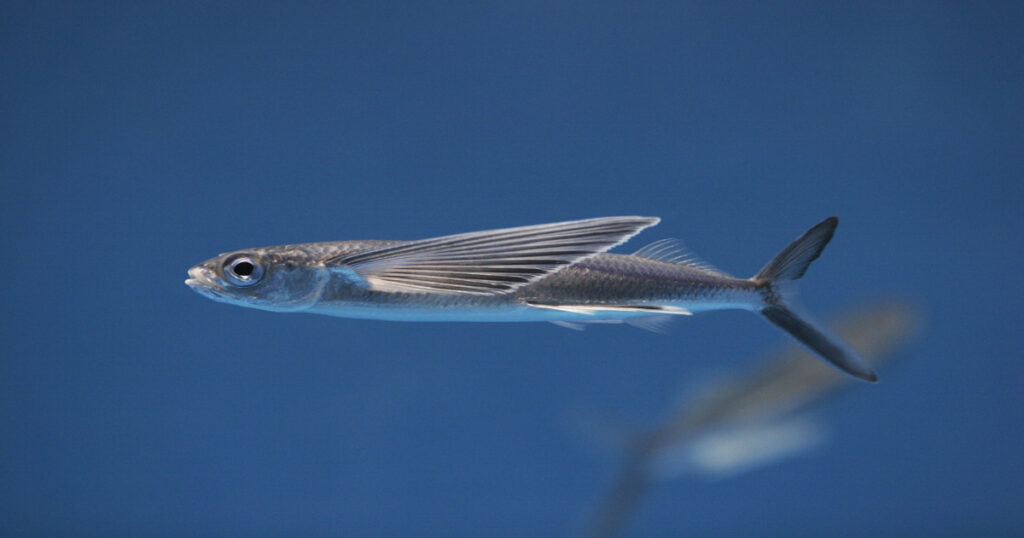
Unveiling the Fascinating Physical Characteristics of Flying Fish
Flying fish are truly remarkable creatures, and their physical characteristics make them stand out in the ocean. Let’s take a closer look at some of these fascinating features:
Average Size and Length
Flying fish come in various sizes, with the average length ranging from 7 to 12 inches. However, there are certain species that can grow even longer, reaching up to an impressive 18 inches.
These measurements may seem small compared to other marine creatures, but for flying fish, it’s just the right size to navigate through the air and water.
Vibrant Colors and Patterns
One striking aspect of flying fish is their vibrant colors and patterns. These hues serve a vital purpose – camouflage.
When resting on top of the water’s surface, flying fish use their colorful appearance to blend in with their surroundings.
This helps protect them from predators lurking below who might otherwise spot them easily.
Distinctive Jaws
Another unique feature of certain species of flying fish is their elongated lower jaws that extend beyond their upper jaws.
This gives them a distinct appearance and adds to their aerodynamic abilities when taking flight.
The extended lower jaw acts as a sort of “wing” during flight, helping them glide smoothly above the water’s surface.
Scales for Protection
The scales on a flying fish’s body play an essential role in protecting them during flight.
These scales are small and overlapping, providing a layer of defense against friction as they soar through the air or skim across the water’s surface.
The arrangement of these scales reduces drag and allows for more efficient movement.
Specialized Fins
Flying fish have two types of fins that aid in their incredible aerial maneuvers: pectoral fins and pelvic fins.
The pectoral fins are large and act as wings when they take flight, propelling them forward through the air.
On the other hand, the pelvic fins help stabilize their bodies and provide balance during flight.
Adapted Tails
The tail of a flying fish is an essential part of its anatomy. It is specially adapted to enhance their ability to glide above the water’s surface.
The tail fins are elongated and shaped like a crescent, allowing them to catch the air currents and propel themselves forward with ease.
Flying fish have evolved these unique physical characteristics over time to adapt to their environment and survive in both air and water.
These features enable them to escape predators, find food such as small crustaceans on the water’s surface, and travel long distances efficiently.
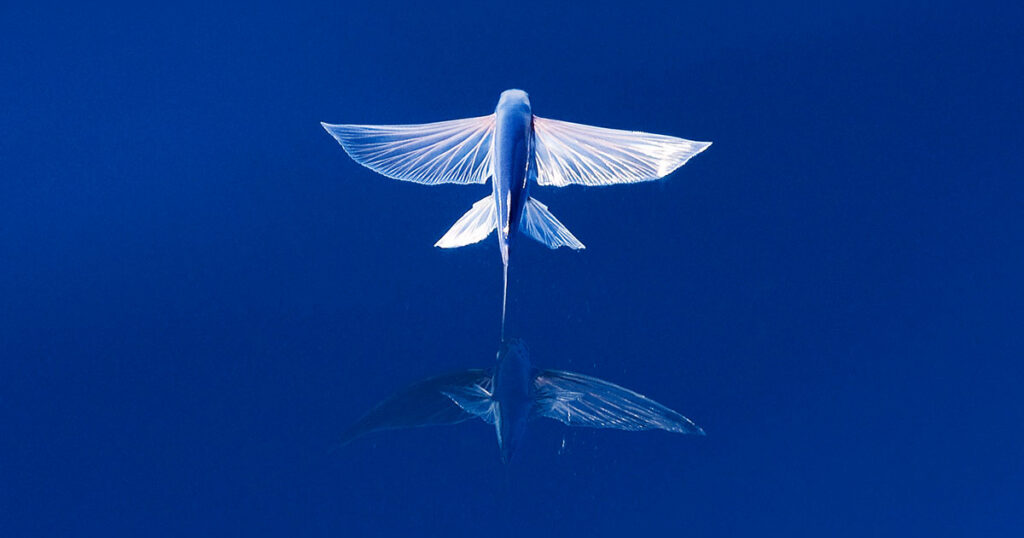
The Thrill of Catching Flying Fish: A Fishing Adventure
Anglers who enjoy challenges may try catching flying fish using specialized techniques. Fishing for flying fish often involves using a lure or bait that mimics their natural prey.
The excitement lies in the chase and the thrill of reeling in these acrobatic creatures. Catching flying fish can provide a unique fishing experience and create lasting memories.
Specialized Techniques for Catching Flying Fish
Fishermen need to employ specific strategies to increase their chances of success. These techniques involve understanding the behavior and habitat of these incredible creatures.
By doing so, anglers can maximize their opportunities to hook one of these remarkable fish. Here are some specialized techniques used in catching flying fish:
- Using Lures or Bait: Anglers often utilize lures or bait that mimic the natural prey of flying fish, such as small squid or shrimp. This entices them to strike and increases the likelihood of a successful catch.
- Fishing at Night: Flying fish are more active at night when they glide above the water’s surface to escape predators. Fishing during this time can enhance your chances of encountering them.
- Targeting Open Ocean Waters: Flying fish are commonly found in open ocean waters, away from shorelines and reefs. Heading out into deeper waters on boats allows anglers to access areas where these magnificent creatures thrive.
The Chase and Reel: Experiencing the Thrill
The real thrill lies in pursuing and capturing a flying fish once it takes the bait or lure.
These agile creatures possess remarkable flight abilities that make them challenging targets for anglers.
Here’s what makes catching flying fish an exhilarating experience:
- Speed and Agility: Flying fish have been known to reach speeds up to 35 miles per hour (56 kilometers per hour). Their ability to glide above the water’s surface allows them to make impressive leaps, evading predators and mesmerizing onlookers.
- Acrobatic Displays: When hooked, flying fish often put on a show by leaping out of the water and gliding through the air. This breathtaking display showcases their incredible aerial prowess.
- Memorable Moments: Catching a flying fish creates lasting memories for anglers. The combination of the chase, the strike, and successfully reeling in one of these unique creatures is an experience that will be cherished for years to come.

Cooking Up Delicious Flying Fish Delicacies
Flying fish are not only admired for their aerial abilities but also valued as a culinary delight.
These unique creatures, with their impressive wings and ability to glide through the air, have found their way into various cuisines around the world.
Coastal regions, where flying fish are abundant, often incorporate them into their traditional dishes.
In coastal areas where flying fish are plentiful, they have become a staple in many local cuisines.
Chefs and home cooks alike have discovered creative ways to prepare these delectable creatures.
Grilling, frying, and baking are popular cooking methods that help retain the delicate flavor and texture of flying fish.
Fresh herbs, spices, and local ingredients play a crucial role in enhancing their taste.
The addition of aromatic herbs like thyme or cilantro can complement the natural flavors of the fish while adding a burst of freshness.
Spices such as paprika or cayenne pepper can add a touch of heat or smokiness to the dish. One popular way to enjoy flying fish is by grilling them over an open flame.
This method imparts a smoky flavor while keeping the flesh tender and moist. Marinating the fish beforehand with citrus juices or soy sauce can further enhance its taste.
Frying is another common cooking technique used for flying fish.
By lightly coating the fillets in flour or breadcrumbs before frying them in hot oil, you can achieve a crispy exterior while maintaining the moistness inside.
This method allows for versatility in seasoning options – from simple salt and pepper to more elaborate spice blends. Baking is yet another option.
By placing seasoned fillets on a baking sheet lined with parchment paper and baking them at a moderate temperature.
You can achieve tender and flaky results without excessive oiliness. Flying fish dishes may be served as standalone entrées or incorporated into other recipes.
For instance, they can be added to salads, tacos, or sushi rolls for a unique twist. The versatility of flying fish allows for endless possibilities in the kitchen.
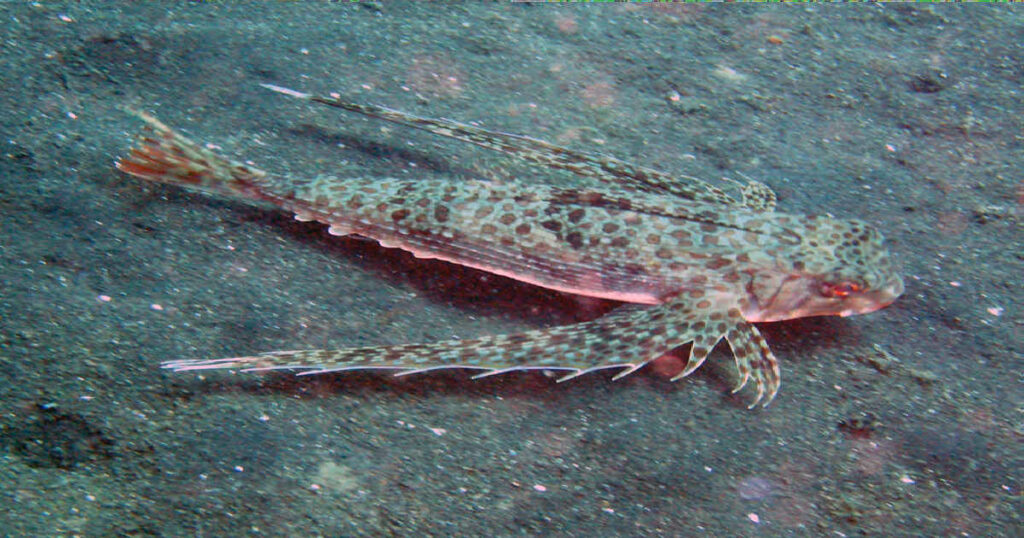
Distribution and Description of Types of Flying Fish
Different types of flying fish can be found in oceans worldwide, each with its own unique characteristics and distribution patterns.
Let’s explore the various types and learn more about their global presence.
Geographic Distribution
Flying fish species are distributed across different oceans around the world. They can be found in tropical and subtropical waters, where they thrive in warm temperatures.
Some species are more commonly found in specific regions, while others have a broader distribution.
- Atlantic Flyingfish (Exocoetus volitans): This type of flying fish is commonly found in the Atlantic Ocean, particularly along the coasts of North America, South America, and Africa. It is known for its vibrant silver coloration and long pectoral fins that enable it to glide through the air.
- Spotfin Flyingfish (Cypselurus spp.): Spotfin flyingfish species are widely distributed across various oceanic regions. They can be found in the Pacific Ocean, Indian Ocean, and even parts of the Atlantic Ocean. These flying fish have distinctive spot-like markings on their bodies and are known for their impressive aerial abilities.
Physical Characteristics
Each type of flying fish possesses its own set of physical characteristics that distinguish it from others.
- Fin Shape: The shape and size of their pectoral fins play a crucial role in enabling them to glide above water surfaces. Some species have elongated fins that resemble wings, allowing them to stay airborne for extended periods.
- Coloration Patterns: The coloration patterns on their bodies vary among different types of flying fish. While some display vibrant colors like silver or blue on their scales, others may have unique markings such as spots or stripes.
Understanding these physical characteristics helps researchers identify different species and study their adaptations for flight.
Insights into Global Presence
Studying the distribution and description of these various types of flying fish provides valuable insights into their global presence and ecological significance.
- Ecosystem Balance: Flying fish serve as a critical link in marine food webs. They are an important food source for larger predatory species, such as dolphins and seabirds. Understanding their distribution helps researchers assess the health and balance of marine ecosystems.
- Climate Change Indicators: Changes in the distribution patterns of flying fish can be indicative of broader shifts in oceanic conditions due to climate change. Monitoring their presence across different regions allows scientists to track these changes and study their potential impacts on marine biodiversity.
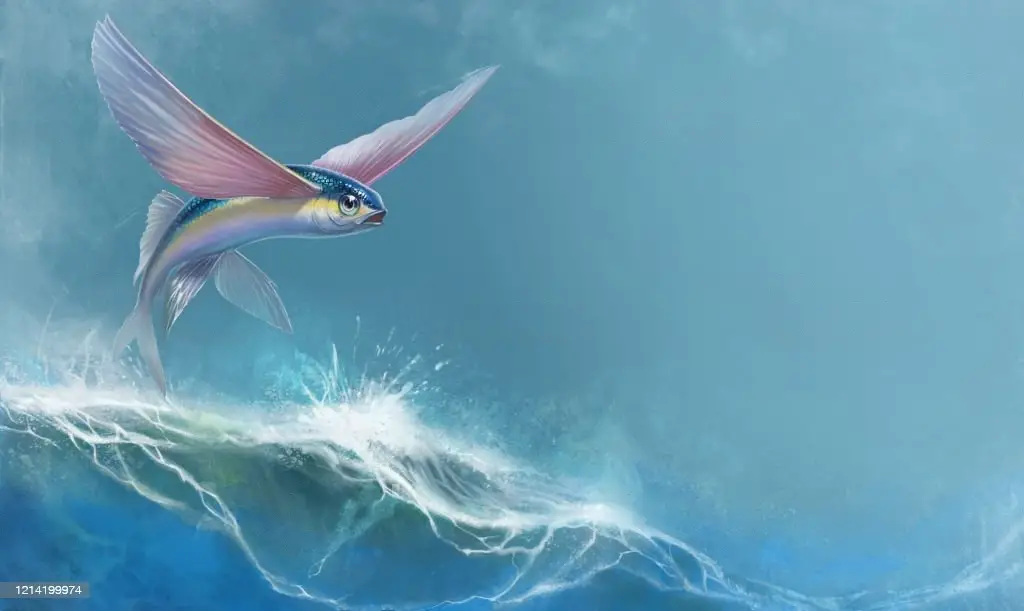
Appreciating the Diversity: Concluding Thoughts on Types of Flying Fish
Studying the various types of flying fish allows us to gain a deeper appreciation for the remarkable diversity found in our world’s oceans.
These incredible creatures have unique adaptations and behaviors that enable them to thrive in different environments.
By valuing this diversity, we can work towards preserving these fascinating creatures for future generations.
Nature’s Remarkable Adaptations
Flying fish come in a variety of shapes, sizes, and colors, each with its own set of adaptations.
Some species have elongated pectoral fins that resemble wings, allowing them to glide through the air effortlessly.
Others have streamlined bodies and powerful tails that propel them out of the water and into flight. These adaptations showcase nature’s ability to evolve and adapt to various ecological niches.
Aerial Displays
One of the most captivating aspects of flying fish is their stunning aerial displays.
When threatened by predators or seeking food, they launch themselves out of the water, spreading their “wings” and gliding above the surface.
This display not only serves as a means of escape but also helps them cover long distances quickly. Witnessing these acrobatic maneuvers is truly awe-inspiring.
Role in Marine Ecosystems
Flying fish play an important role in marine ecosystems as both predator and prey.
They feed on plankton near the ocean’s surface, helping regulate populations and maintaining balance within the food chain.
Larger predatory fish rely on flying fish as a source of sustenance. Their presence contributes to the overall health and functioning of marine ecosystems.
Biodiversity Conservation
Understanding and appreciating the diversity among flying fish species is crucial for biodiversity conservation efforts.
Each type has its own unique characteristics that contribute to our understanding of these remarkable creatures’ biology and ecology.
By studying their behavior patterns, migration routes, and habitat preferences, scientists can develop strategies for protecting their populations.
Preserving for Future Generations
Preserving the diversity of flying fish is not only essential for their survival but also for the enjoyment and education of future generations.
These fascinating creatures capture the imagination and curiosity of people worldwide.
By raising awareness about their importance and advocating for sustainable fishing practices, we can ensure that flying fish continue to thrive in our oceans.

Conclusion
In conclusion, exploring the world of flying fish has been a fascinating journey.
From understanding their unique adaptations to delving into their behavior, habitat, and physical characteristics, we have gained a deeper appreciation for these incredible creatures.
The thrill of catching flying fish and the delight of cooking up delicious delicacies using them have added another layer to our understanding.
As we have discovered, there is a wide distribution and description of types of flying fish across different regions.
Each species possesses its own distinct features and behaviors that contribute to the overall diversity within this group.
By appreciating this diversity, we can foster a greater sense of curiosity and respect for nature’s wonders.
To continue your exploration, consider researching specific types of flying fish found in your area or planning an adventure to witness them firsthand.
Whether you are an avid angler or simply intrigued by marine life, there is always more to discover about these remarkable creatures.
FAQs
1. What are the unique adaptations that enable flying fish to glide through the air?
Flying fish possess several unique adaptations that allow them to glide through the air effortlessly. Their long pectoral fins act as wings when extended, providing lift as they soar above the water’s surface. Their streamlined bodies and slim tails reduce drag while airborne, enhancing their ability to travel longer distances.
2. Are all flying fish capable of sustained flight?
While most species of flying fish are capable of gliding through the air for short distances, not all can sustain flight for extended periods. Some species can only remain airborne for a few seconds before returning to the water, while others have been known to travel impressive distances spanning hundreds of meters.
3. How do flying fish evade predators while airborne?
Flying fish have evolved various strategies to evade predators while in flight. They often leap out of the water at high speeds and heights, making it challenging for predators such as birds or larger fish to catch them. Their ability to change direction mid-flight allows them to confuse and outmaneuver potential threats.
4. Can flying fish be found in all oceans?
Flying fish are distributed across various oceans worldwide, including the Atlantic, Pacific, and Indian Oceans. However, the specific species and populations may vary depending on the region. Some species are more abundant in tropical waters, while others can be found in temperate regions.
5. Are there any conservation efforts focused on protecting flying fish?
While flying fish are not currently considered endangered, conservation efforts aimed at protecting marine ecosystems indirectly contribute to their preservation. By promoting sustainable fishing practices and reducing pollution in our oceans, we can ensure a healthy environment for all marine life, including flying fish.

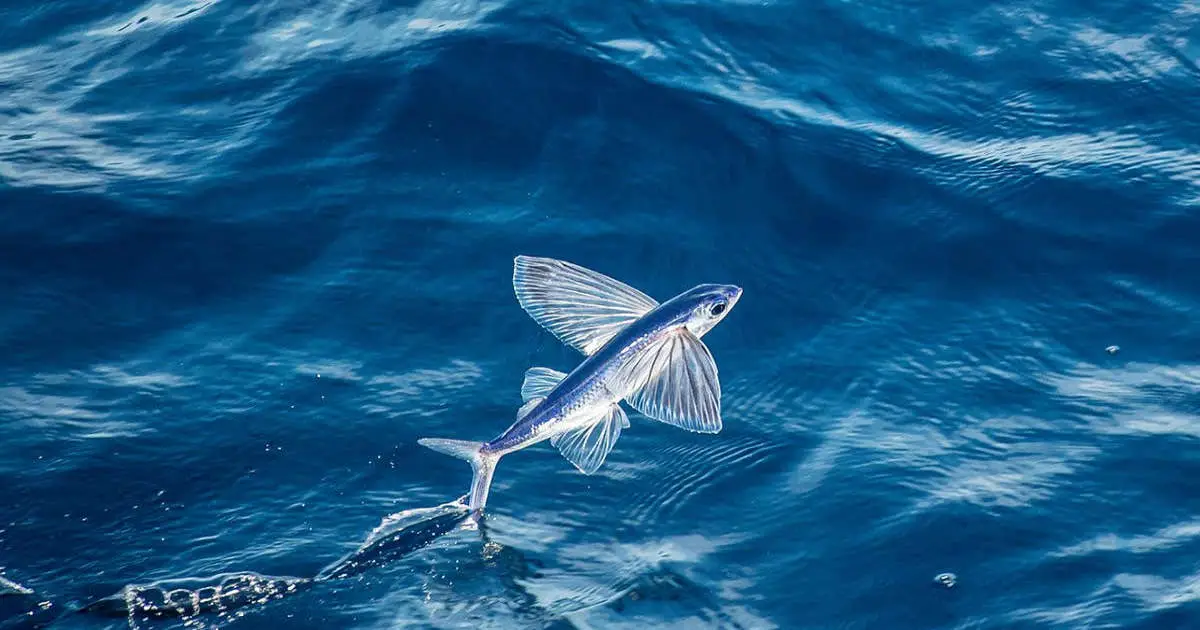
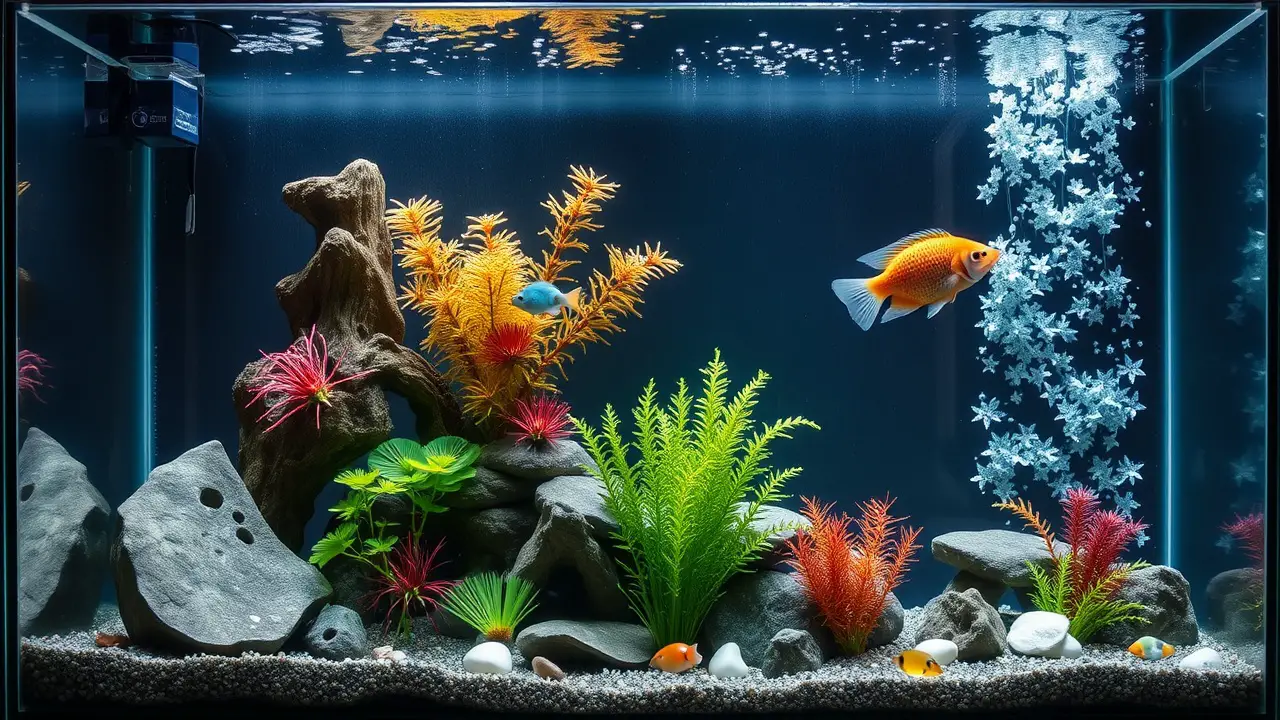


Leave a Reply